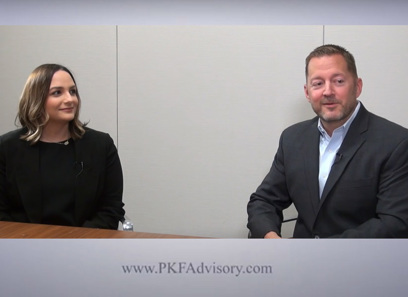Discovering the Legal and Monetary Elements of Mergers and Acquisitions Deals

Overview of Mergers and Acquisitions
Mergers and purchases (M&A) stand for a significant segment of corporate strategy, with plenty of purchases taking place internationally yearly. These critical maneuvers are mostly focused on enhancing affordable benefit, increasing market share, and accomplishing operational synergies. M&A tasks typically fall under two distinctive groups: mergings, where two firms combine to develop a brand-new entity, and procurements, where one firm acquisitions another, thus maintaining its identification.
The motivations behind M&A transactions are varied. Companies may pursue these methods to expand their item offerings, go into brand-new markets, or utilize technical developments (Economic factors influencing M&A). Additionally, M&A can work as a method to eliminate competitors or access to useful copyright
The process of M&An includes several phases, consisting of target recognition, valuation, settlement, and assimilation. Effective deals require thorough due persistance to evaluate economic wellness, operational capabilities, and possible responsibilities of the target business. In addition, cultural placement in between merging entities plays an important function in ensuring a smooth shift and lasting success. As companies navigate the intricacies of M&A, understanding the critical imperatives and potential challenges is crucial for achieving preferred outcomes in a progressively affordable landscape.
Lawful Structure and Compliance
Comprehending the lawful structure and conformity needs surrounding acquisitions and mergers is crucial for navigating the intricacies of these transactions - Economic factors influencing M&A. These procedures are regulated by a myriad of laws at both federal and state degrees, which aim to ensure reasonable competitors, protect stakeholders, and promote corporate governance standards
Secret regulative bodies, such as the Federal Trade Payment (FTC) and the Stocks and Exchange Compensation (SEC), implement antitrust laws and protections policies, respectively. Firms need to perform complete due diligence to recognize any prospective lawful barriers, consisting of anti-competitive issues or regulative authorizations needed for an effective deal.
In addition, compliance with disclosure responsibilities is vital, especially when public business are entailed. This includes filing required documents and giving exact information to shareholders and governing authorities.
Cross-border M&A transactions present additional layers of complexity, as varying legal requirements and governing frameworks must be navigated. Engaging legal guidance with competence in procurements and mergings is essential to ensure adherence to suitable laws and to reduce dangers. Hence, understanding these legal structures not only helps with compliance but also boosts the possibility of a efficient and effective merger or purchase.
Financial Appraisal Strategies

Amongst the most common strategies are the Reduced Capital (DCF) evaluation, which estimates the present worth of predicted future cash money circulations, and the Similar Company Evaluation (CCA), which examines a business's worth family member to comparable firms within the same market (Economic factors influencing M&A). In Addition, Criterion Purchases Evaluation (PTA) checks out historic purchase information to establish criteria for assessment
An additional substantial technique is the Asset-Based Assessment, which focuses on the business's net possession worth, using a concrete assessment of worth by considering both long-lasting and existing obligations and assets. Each technique has its constraints and toughness, frequently differing in applicability relying on the nature of the service and the sector context.
Inevitably, employing a mix of these economic valuation strategies can yield a thorough understanding of a firm's value, assisting to guarantee that both purchasers and vendors take part in fair and fair deals during the detailed procedure of mergings and procurements.
Due Diligence Process
Carrying out complete due diligence is necessary to revealing essential info concerning a target firm prior to finalizing a merging or procurement. This process involves a comprehensive review of the target's economic, functional, legal, and regulative elements. The key purpose is to identify prospective dangers and liabilities that may impact the purchase's value or post-merger performance.

Furthermore, social due persistance evaluates the compatibility of the combining entities' company societies, which is crucial for a successful integration. The due diligence process requires partnership amongst various stakeholders, consisting of legal counsel, economic experts, and market experts, to make sure an all natural understanding of the target firm.
Inevitably, the searchings for from due persistance notify arrangement strategies and may cause adjustments in the acquisition rate or terms, thus guarding the passions of the getting event and preparing for an effective merging or purchase.
Post-Merger Integration Difficulties
While effective mergings and acquisitions frequently generate substantial harmonies and growth possibilities, the post-merger assimilation stage presents a myriad of challenges that can threaten these benefits. One of the leading concerns is the cultural assimilation of the merging entities. Differing company cultures can bring about worker resistance, lowered spirits, and eventually, ability attrition. Developing a Mergers and Acquisitions unified corporate identity is essential to alleviate these risks.
One more considerable difficulty lies in aligning systems and processes. The combination of disparate IT systems, operational techniques, and monetary coverage can be complicated and taxing, often leading to operational disruptions. Additionally, the failure to communicate efficiently throughout this stage can result in confusion and misinformation amongst clients, stakeholders, and staff members.
Financial integration also presents challenges, particularly in resolving economic plans and bookkeeping practices. This imbalance can cause incongruities in monetary coverage, impacting stakeholder confidence and market assumption.
Finally, regulatory compliance issues might emerge, demanding thorough focus to lawful demands. Resolving these obstacles promptly and purposefully is vital for recognizing the expected benefits of a merging or procurement, making sure long-lasting success and stability.
Verdict
In final thought, the complex landscape of mergings and purchases demands a comprehensive understanding of both monetary and lawful facets. Adherence to regulatory frameworks ensures conformity and mitigates anti-competitive threats, while robust monetary appraisal strategies provide vital insights right into firm worth.
The intricate landscape of procurements and mergings purchases demands a detailed understanding of both legal structures and monetary appraisal methods. Regulatory bodies, such as the FTC and SEC, impose rigorous conformity demands to secure versus anti-competitive habits, while durable monetary analysis strategies are important for accurately evaluating a firm's value. Effective deals require thorough due diligence to assess financial wellness, functional capacities, and prospective liabilities of the target business.Financial due persistance examines historic and predicted financial declarations, money circulation evaluation, and tax obligation conformity. Adherence to regulatory frameworks ensures compliance and minimizes anti-competitive risks, while durable financial assessment methods provide essential insights into company well worth.